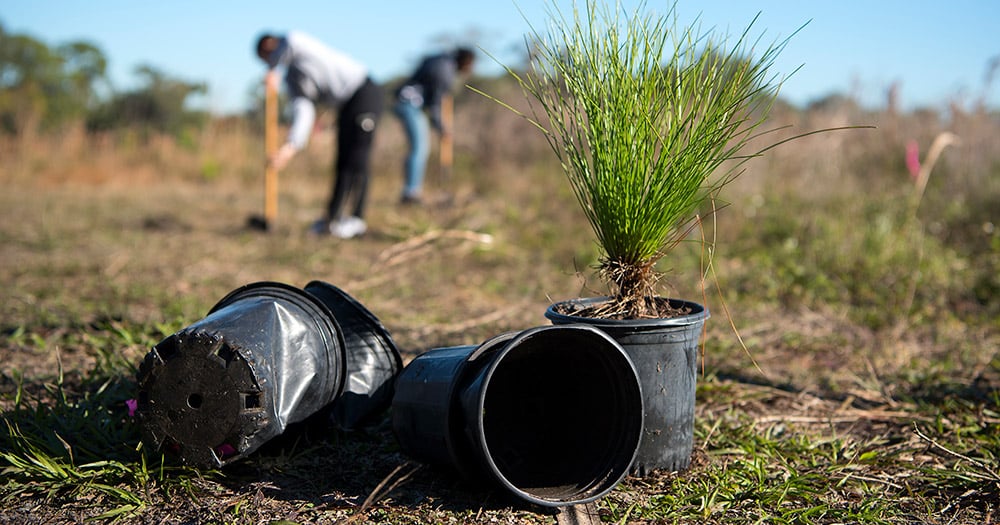Investing has long been a way to grow your wealth, but today it also offers a path to support social and environmental change. With the rise of sustainable investing, you now have the chance to align your financial choices and ethical values. From ESG funds to green bonds and thematic ETFs, there’s a wide range of options to choose from.
No longer confined to just environmental initiatives, the sustainable investment landscape has broadened to include opportunities in social justice, corporate ethics, and more. The appeal lies in the ability to create a portfolio that reflects the causes close to your heart, making your investments both meaningful and profitable.
If you’re new to investing or looking to diversify with purpose, this article is for you. We’ll explore different asset classes and provide concrete examples to help you make informed choices that are consistent with both your financial goals and ethical stance.
Definition
A sustainable investment is a financial investment made into companies, funds, or projects committed to environmental, social, and governance (ESG) principles. These investments aim to generate not only financial returns but also positive outcomes for society and the environment.
The environmental component is about how a company performs in relation to the natural environment and the climate. Specific considerations could range from a company’s carbon footprint to how well it manages its waste or conserves natural resources. Companies leading in renewable energy, for example, often score high on the environmental scale.
The social and governance criteria look at how a company treats its employees, suppliers, and community. This includes labor practices and board diversity. Companies that score well usually have strong employee benefits and community engagement.
Sustainable Investment Examples

Here is a list of popular sustainable investment options. Designed for both experienced investors and newcomers, this guide offers actionable ways to contribute positively to environmental, social, and governance issues. Each option comes with a concrete example of how to invest sustainably.
1. Invest in ESG-focused mutual funds
ESG-focused mutual funds invest in a variety of companies that meet specific environmental, social, and governance criteria. It’s an easy way for investors to diversify their portfolios while adhering to their ethical standards.
Example: Choose a mutual fund like the Vanguard ESG U.S. Stock ETF and buy its shares through your brokerage account.
2. Buy shares in ethical companies
Directly investing in companies with strong ethical practices allows you to support specific businesses you believe in. This strategy requires some research to determine a company’s ethical standing.
Example: After checking ESG ratings, invest in a company like Tesla, which is focused on sustainable energy solutions.
3. Use a green robo-advisor
Green robo-advisors use algorithms to manage a portfolio based on ESG criteria. They provide an automated, hands-off approach to sustainable investing.
Example: Sign up for a robo-advisor service like Wealthsimple that offers a socially responsible portfolio option.
4. Buy green bonds
Green bonds fund environmentally beneficial projects like renewable energy or pollution control. These can be issued by both governments and companies.
Example: Invest in a U.S. Treasury Green Bond through a brokerage or financial advisor.
5. Select specialized sustainable ETFs
Some exchange-traded funds focus on specific sustainability themes like renewable energy, water conservation, or gender equality.
Example: Buy shares of the “Invesco Solar ETF (TAN),” which invests in solar energy companies.
6. Invest in eco-friendly real estate
Eco-friendly real estate investments focus on properties that use sustainable materials and energy-efficient systems.
Example: Invest in a Real Estate Investment Trust (REIT) that specializes in buildings with LEED certification.
7. Buy social impact bonds
Social impact bonds fund projects aimed at improving social outcomes like healthcare or education.
Example: Purchase a social impact bond focusing on improving high school graduation rates in underprivileged communities.
8. Purchase community investment notes
Community investment notes allow investors to support local projects like affordable housing or small business loans in underserved communities.
Example: Buy a community investment note from a platform like Calvert Impact Capital to fund local initiatives.
9. Fund renewable energy projects
Direct investment in renewable energy projects like wind farms or solar installations can offer both financial and environmental rewards.
Example: Use a crowdfunding platform like Crowdcube to invest in a startup that is developing new solar technology.
10. Provide microfinance loans
Microfinance loans involve lending small sums to entrepreneurs in developing countries, who then use the funds to start or expand businesses.
Example: Use a platform like Kiva to lend $50 to a farmer in a developing country to buy seeds and tools.
11. Donate to sustainable nonprofits
Contributing to nonprofits focused on sustainability can offer social and environmental impact, though it doesn’t provide a financial return.
Example: Make a donation to the Environmental Defense Fund, a nonprofit focused on ecological issues.
12. Join a sustainable investment club
Investment clubs gather like-minded individuals to discuss and invest in sustainable options. While not a direct form of investment, the pooled knowledge and resources can help guide more effective individual choices.
Example: Join or create a local investment club focused on analyzing and investing in companies with strong ESG practices.
What Is the Best Way to Invest Sustainably?

A widely recommended approach to investing sustainably for both beginners and seasoned investors is to allocate a portion of their portfolio to ESG-focused mutual funds or ETFs. These funds offer the advantage of diversification. They are generally managed to align with sustainable business practices across environmental, social, and governance criteria.
Suppose you are a moderate-risk investor who wants to make sustainability a significant part of your investment strategy. You could opt for a well-regarded ESG mutual fund like BlackRock’s iShares ESG Aware MSCI USA ETF. This fund offers exposure to large- and mid-cap U.S. companies that have been screened for positive ESG practices.
To execute this, you would log into your brokerage account, search for the ticker symbol “ESGU,” and proceed to buy the number of shares that aligns with your investment goals and risk tolerance. By investing in such a fund, you are effectively diversifying your portfolio across multiple companies that meet sustainability criteria.
Another form of investment into sustainable development is with your job. As the demand for eco-friendly solutions rises, so does the need for professionals in the sustainability sector. You can pivot into green careers such as an agronomist, ecologist, energy engineer, environmental consultant, or sustainability manager, all of which are integral in crafting a more sustainable future.




Jonathan Naimon
Investor Responsibility Research Center was an NGO Founded in 1970s that I worked for in 1990s. IRRC managed programs in south africa , social issues, environmental sustainability, corporate governance that contributed to development of what became ESG investing. IRRC was acquired by ISS, Risk Metrics and ultimately MSCI’s ESG division. Question: do you have any association with that organization?
admin
Thanks for reaching out Jonathan. No, we’re not associated with the NGO you worked for.
Michael Lanteri
It’s encouraging to see more and more investors (https://medici.investments/) recognizing the importance of considering these factors in their investment decisions.
Michael Lanteri
Sustainable investing (https://medici.investments/) promotes fair labor practices, diversity and inclusion, and community development, thereby contributing to social justice and equality.